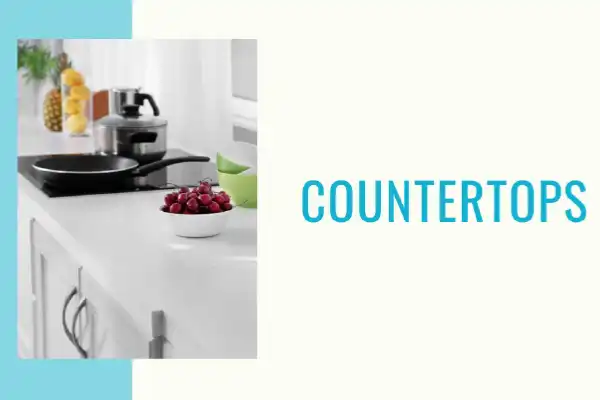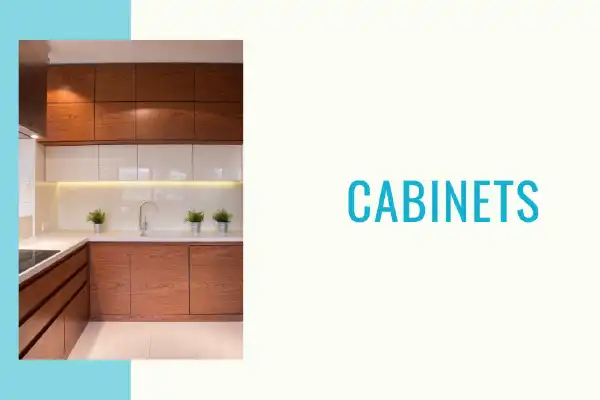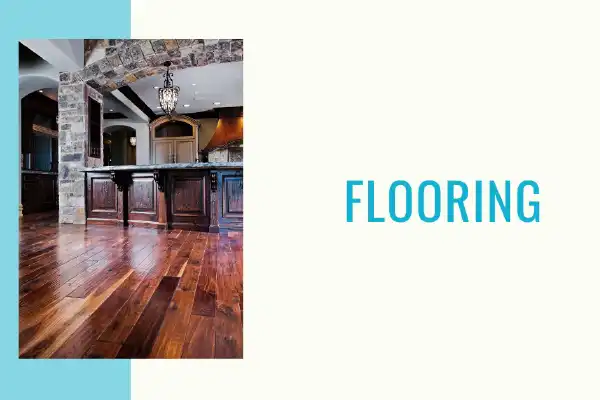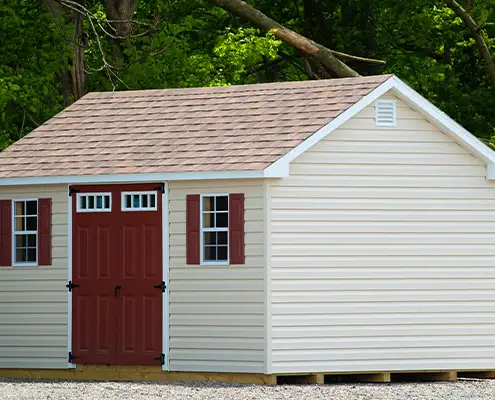5 Must-Have Kitchen Renovations for Newly Moved-In Homes
Are you the proud owner of a newly moved-in home with an outdated kitchen? If so, you’re in luck! Kitchen renovations are one of the best and most rewarding ways to update your home.
Not only will renovating your kitchen give it a much-needed facelift, but it also adds value to your property. Plus, there’s nothing quite like cooking delicious meals in a beautiful, modern space.
Read on for five ideas and tips that’ll help you give your kitchen that special touch after moving in.
1. Countertops

Countertops are the surfaces in the kitchen that you can put things on. They help keep your kitchen organized and in neat appearance.
Depending on the material, the countertop may be heat-resistant, stain-proof, and even scratch-resistant.
Here are some of the different materials to choose from:
Types of Countertops
There are a variety of material options when it comes to countertops. Some of the most popular materials include:
Quartz (Engineered Stone)
They are very durable and can last a long time without becoming damaged. Plus, they come in different colors and patterns, so you can find one that fits your style.
Quartz countertops also resist heat, stains, and scratches, meaning you won’t have to worry about them getting ruined easily.
The fact that they are engineered also means that they are non-porous, so it’s easy to clean and maintain.
Granite
One of the most popular and best kitchen countertop materials is granite. It’s a natural stone with unique patterns and colors that will give your kitchen a luxe look.
Granite is also very durable and heat resistant, so it can handle hot cookware without any damage. The downside is that it needs to be sealed regularly to protect it from staining and discoloration.
Tile
Tile countertops are an excellent option for those who want a more customized look in their kitchen.
They are very easy to install and come in various colors, textures, and patterns, so you can create a unique countertop for your kitchen.
Tiles are also heat-resistant, stain-resistant, and scratch-resistant, making them an excellent choice for busy kitchens.
Dekton
Relatively new on the scene, Dekton countertops are an engineered material combining natural stone, porcelain, and ceramic.
They are incredibly durable and can withstand temperatures of up to 890°C. This makes them an ideal choice for busy kitchens constantly exposed to heat. Plus, Dekton countertops are non-porous and easy to maintain clean.
Natural stone
Natural stone countertops are the way to go for those who want an elegant, timeless look in their kitchen.
They come in a variety of materials, such as marble, limestone, and soapstone. Natural stone is quite resilient but does need to be sealed regularly to protect it from staining and discoloration.
Cleaning and maintaining them just need pH-balanced water and a soft cloth.
Cost and Durability Factors
So, how much does renovating your kitchen countertops cost, and which material is the most durable? Let’s take a closer look at some of the cost and durability factors you should consider.
Style and Design
The style and design of countertops can vary greatly, depending on the material you choose. Natural stone has a more classic, timeless look, while quartz is more modern and sleek.
Installation
The installation cost will depend on the material type and complexity of your kitchen. Granite countertops, for instance, require an experienced professional to install them properly.
Maintenance
All countertops need to be regularly sealed, but some materials require more upkeep than others. So, consider the amount of time and effort it will take to keep your countertops looking their best.
How to Choose the Right Countertop
Now that you know the different countertop materials, cost, and durability factors to consider, it’s time to decide which one is right for you. Here is a step-by-step guide to help you choose the right countertop.
Step 1:
Consider your budget. Find how much you can spend on a countertop and stick to it.
Step 2:
Consider your design style and which material best fits that. When doing this, also consider the maintenance requirements of each material.
Step 3:
Consider installation costs. Determine whether you need professional help or can handle the installation yourself.
Step 4:
Make your final decision and purchase your countertop. Be sure to measure twice before you buy.
2. Cabinets

Kitchen cabinets are another vital part of the kitchen renovation and remodeling process.
Cabinets come in various styles, materials, and designs to choose from, so you can create a functional and stylish space.
Let’s take a look at some of the common types of materials and styles available.
Types of Cabinets
Shaker
The most common style for cabinets today is the Shaker style. This classic look has simple, flat-paneled doors with minimal decorations and embellishments. It consists of five pieces of flat-panel wood, making it a popular choice for those who want a more modern and minimalist kitchen look. This design also allows for easy installation and updating.
Raised panel
The raised panel style has doors above the cabinet frame, adding a more decorative touch to the kitchen. These doors are also raised above the cabinet frame, giving them a more polished and elegant look. This is an excellent option for those looking for a more classic or traditional kitchen style.
Frameless
Frameless cabinets are also known as European-style cabinets. Instead of having a frame around the doors, this style lacks frames and has the door attached directly to the cabinet box. This style of cabinet is usually chosen for its modern and contemporary look and its ability to create a seamless look.
Louvered
Louvered kitchen cabinets come with horizontal wooden slats. This style of cabinet door is ideal for those who want a more unique and creative look in their kitchen, as the slats can be painted or stained in different colors. They are great for ventilation spaces because air can circulate easily through the slats.
Modern
Modern cabinets are sleek and stylish. They often feature clean lines and minimalistic designs, which is perfect for a modern kitchen.
You can either go for classic black options or a bright and bold color. All these options can help create a unique look that will stand out.
Cost and Durability Factors
Once you have narrowed down your choice of cabinet styles, you’ll need to consider the cost and durability factors. Below are some of the important factors to keep in mind when choosing your kitchen cabinets.
Material
Kitchen cabinets are usually made of particle board, plywood, solid wood, or thermofoil. Your choice of material should depend on its durability and cost.
Installation
You’ll need to consider the installation cost for your cabinets. If you hire a professional, ensure the cost is within your budget.
Maintenance
Different materials require different levels of maintenance. Consider how much time you’re willing to devote to taking care of your cabinets.
How to Choose the Right Cabinet Style
Step 1:
Measure your space and determine the size of cabinets that will fit. You’ll also want to measure the space’s height, width, and depth.
Step 2:
Consider your budget and decide how much you can spend on the cabinets.
Step 3:
Consider the style of the room and which cabinet style will best complement it.
Step 4:
Research different materials and consider the pros and cons of each. This will help you determine which material is best for your needs.
Step 5:
Consider installation costs if you are hiring a professional.
3. Flooring

Kitchen flooring also plays an important role in your kitchen’s overall look and feel. There are several options, such as hardwood, tile, laminate, and vinyl.
Each has its own advantages and disadvantages, so it’s essential to consider what will work best for your kitchen.
Let’s take a look at some of the most popular types of kitchen flooring materials.
Types of Flooring
Hardwood
Hardwood flooring has been one of the most prevalent types of wooden flooring materials for decades, thanks to its durability and classic style.
It can add a warm, inviting atmosphere to any room and is easy to maintain with regular sweeping and mopping.
The installation is done with a tongue-and-groove technique, which has been around since the Colonial era.
Tile
Tile flooring is a popular option for both kitchen and bathroom floors. It is durable, water-resistant, and easy to clean.
It is also available in various colors, patterns, and sizes. For a more modern look, you may opt for larger tiles.
Carpet
Carpet is a softer, more comfortable option for kitchen flooring. It is available in various colors and patterns and can add warmth to a room.
The fiber type will affect how easy it is to clean and maintain, so choose a type that suits your needs.
Polished concrete
Homeowners are increasingly turning to polished concrete for its modern look and durability.
It is easy to clean, highly resistant to stains, and can be polished in any color. It’s also an excellent choice for those who don’t want to spend much money on flooring.
Cost and Durability Factors
When it comes to flooring, cost and durability are important factors to consider. Here are some things to keep in mind when selecting your kitchen flooring.
Style and design
Consider the style and design of flooring that fits with the overall decor of your kitchen. Classic hardwood or tile flooring is costlier than other options like vinyl or laminate. The durability of each material will also vary.
Installation
Installing flooring can be costly. You’ll want to factor in the cost of professional installation or any materials and tools needed if you plan to install it yourself.
Maintenance
Flooring should be regularly maintained to keep it looking its best. Different flooring materials require different levels of maintenance, ranging from weekly cleaning to occasional resealing. Consider how much time you’re willing to devote to taking care of your flooring.
Choosing the Right Flooring
Here is a step-by-step guide to help you choose the right flooring.
Step 1: Assess your needs
Before you start shopping for flooring, it is important to consider your needs. Think about how much traffic your kitchen will get and how often you use it.
This can help you determine the type of flooring that best meets your needs, such as tile, laminate, vinyl, or hardwood.
Step 2: Consider your budget
Your budget plays a significant role in determining what type of flooring you can afford. Quality flooring can be expensive, but there are plenty of budget-friendly options, such as laminate or vinyl.
Step 3: Choose your style
Your flooring should match your style and décor. From modern to traditional, many different styles can fit into your kitchen. Consider the color and texture of the flooring to help determine which material is best for you.
Step 4: Determine your cleaning needs
Different types of flooring can require different levels of cleaning. For example, tile and laminate flooring can be easier to maintain than hardwood or carpet. Think about how much time you want to dedicate to cleaning your floor and choose one that best meets your needs.
Step 5: Think about safety
Some flooring materials can be slippery or hazardous, particularly in a kitchen. Consider safety when choosing your flooring, and opt for materials that can help prevent slips and falls.
Step 6: Decide your install option
Finally, consider your installation options. You may be able to install the flooring yourself, or you might need to hire a professional. This can also help you determine which flooring will work best for your space and budget.
4. Appliances

Similarly, appliances can make or break a kitchen. Consider the types of appliances you need and how they will fit into your kitchen design.
Appliances can be installed in different configurations, depending on the size of your kitchen. The key is to find a setup that fits your needs and the overall design of your kitchen.
Let’s look at some of the most popular kitchen appliances you should consider.
Types of Kitchen Appliances
Refrigerator
A refrigerator is one of the most essential appliances in a kitchen and should be carefully considered when designing your space. They come in a variety of sizes, styles, and colors to fit different needs and budgets. When choosing your refrigerator, consider factors such as size, energy efficiency, noise level, and counter depth.
Oven
An oven is essential for any kitchen, whether it’s a built-in wall oven or a freestanding range. They come in several sizes and configurations, from single to double ovens. Consider your cooking needs and available space when choosing an oven.
Dishwasher
A dishwasher is a great way to save time in the kitchen, particularly if you cook often. Dishwashers come in different sizes and styles to fit different needs. Consider noise levels, energy efficiency, and capacity when selecting your dishwasher.
Range hood
A range hood is an important safety feature for any kitchen. Range hoods are designed to remove fumes, smoke, and odors from the kitchen. Consider factors such as noise levels, energy efficiency, and ventilation when selecting your range hood.
Cost and Durability Factors
Cost and durability are two of the most important factors when choosing your kitchen appliances.
Quality appliances may cost more upfront but can last longer and save money in the long run.
Be sure to compare the prices and features of different brands before making your final decision.
You may also consider purchasing extended warranties to help protect your investment.
Choosing the Right Kitchen Appliances
When choosing kitchen appliances, there are a few steps you should follow. Here is a step-by-step guide to help you pick the right appliances for your kitchen.
Step 1: Set a budget
The first step is to set a budget. Knowing how much you can spend will help narrow down your choices and ensure that you don’t spend more than you can afford.
Step 2: Measure your space
Measure where the appliance will be installed before purchasing. This will help you ensure that the appliance will fit in your kitchen and not be too big or too small.
Step 3: Choose your style and color
Once you have your budget and measurements, it’s time to choose the style and color of your appliances. Traditional or modern? Stainless or white? Make sure to choose an appliance that will fit in with the look and feel of your kitchen.
Step 4: Consider energy efficiency
Before making a purchase, check the appliance’s energy efficiency rating. This will not only help reduce your energy bills but also help you be more environmentally friendly.
Step 5: Seek out deals and offers
Don’t forget to look for any special deals or offers that might be available. These can save you a lot of money and make it easier for you to afford the right kitchen appliances.
Step 6: Read and compare reviews
Finally, read reviews of the appliances you’re considering before making your purchase. This can help you ensure you’re getting the best quality appliance for your needs.
5. Lighting

Lighting plays an essential role in your kitchen’s overall look and feel.
Whether you’re looking for task lighting, ambient lighting, or accent lighting, you should keep a few things in mind when it comes to kitchen lighting.
Types of Kitchen Lighting
The first thing you’ll need to do is determine the type of lighting you need for your kitchen. Here are some ideas.
Recessed lighting
Recessed lighting is ideal for providing a bright, even light throughout your kitchen.
Track lighting
Track lighting is excellent for directing light to specific areas and adding a modern touch to your kitchen.
Pendant lights
Pendant lights can provide a dramatic and stylish look and great task lighting.
Under cabinet lighting
Under cabinet lighting can be used to provide extra light for countertops, as well as a decorative touch.
Choosing The Right Kitchen Lighting
Once you know the type of lighting you need, you must consider a few factors before making your purchase. Here are some things to keep in mind.
Light output
Consider the amount of light needed for the space. For task lighting, you’ll want more light than you would need for ambient lighting.
Brightness
Look for bulbs with the right brightness level and color temperature to suit your needs.
Style
Choose lighting fixtures that will match the style of your kitchen.
Energy efficiency
Look for bulbs and fixtures that are energy efficient to help reduce your energy bills.
Safety
Ensure the lighting fixtures you choose are safe and compliant with local codes.
Conclusion
Kitchen renovations are essential for newly moved-in homes to make them feel like your own.
With the right kitchen appliances, cabinets, lighting, furniture, and flooring, you can create a space that is not only functional but also aesthetically pleasing.
Consider your budget, measure the available space, choose styles and colors that best fit your home decor, look out for special deals and offers, and read reviews before making any purchases.
By following these steps, you will surely find the perfect kitchen setup for your newly moved into home.






